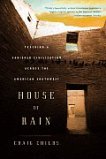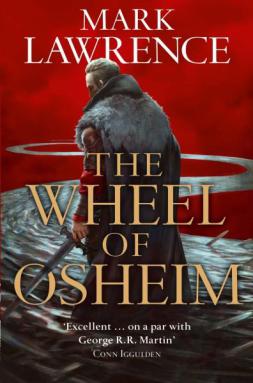House Of Rain by Craig Childs
publication date: 2006
pages: 496
ISBN: 978-0-316-60817-6
In House Of Rain, Craig Childs presented a piece of reportorial nonfiction, interwoven with narrative travelogue. For several seasons, Childs trekked the southwestern U.S. in order to discover for himself the world of the native people who inhabited that land before Europeans. Childs moved through New Mexico, Colorado, Utah, Arizona, and northern Mexico, often on foot, to follow the centuries-long migrations of a people he usually called “Anasazi.” There is some controversy surrounding the term Anasazi, both because there is disagreement about how large their territory actually was and because Anasazi, a Navajo term, can be objectionable to modern-day Pueblo people – who instead may use the term “Ancestral Puebloans.” Childs used this phrase sometimes, along with another – Hisatsinom – that is used by contemporary Hopi. Childs explained his use of the word Anasazi and used other words when he thought it was appropriate.
House Of Rain described Childs’s travels as he explored cliff dwellings, seemingly uninhabitable gorges, great Anasazi kivas, and active archaeological digs. His travelogue writing was compelling, although often pretentious. A good example was this passage, when Childs was exploring Anasazi construction on what is now a national park:
A cascade of flute music emanated from speakers tucked among the ceiling beams. I stood still for a moment, a little surprised, recognizing immediately that the music was played not on a Native American flute, but on a traditional Japanese shakuhachi. . . . This kiva was tangled in eclectic ancestry, unrelated histories passing in and out of each other, brought together by this place. What was it Einstein said, that time and space are the same entity? Does that mean that if you stand in one place and are a keen enough observer, you can see clearly through time’s entire lineage?
His discussions of the Anasazi people could also be self-serious or extravagant, but he did present many interesting facts about their daily lives and viewpoints. Here was his discussion of Kinishba, a vacated Anasazi compound:
I sensed manners and social regimentation in the way the site was laid out. It was not the monastic atmosphere I had once imagined in the halls of [another compound called Chaco], but a busy, orderly setting, an urban trade center. Everyone had a place, some families having doorways that opened prominently onto plazas, others living in smoky, poorly lit rooms deep in the pueblo’s interior.
The nonfiction account of the Anasazi people and Childs’s descriptions of his expeditions was often woven together effectively and he presented a convincing case that the land he was exploring needed to be walked or hiked to ever understand the Anasazi people.
Childs’s tone was often dense and he imbued even the smallest event with meaning. However, he created a generally compelling and informative work.
4/6: worth reading
other reviews:
Orion Magazine
Ms. M’s Bookshelf
Light+Space+Structure blog





